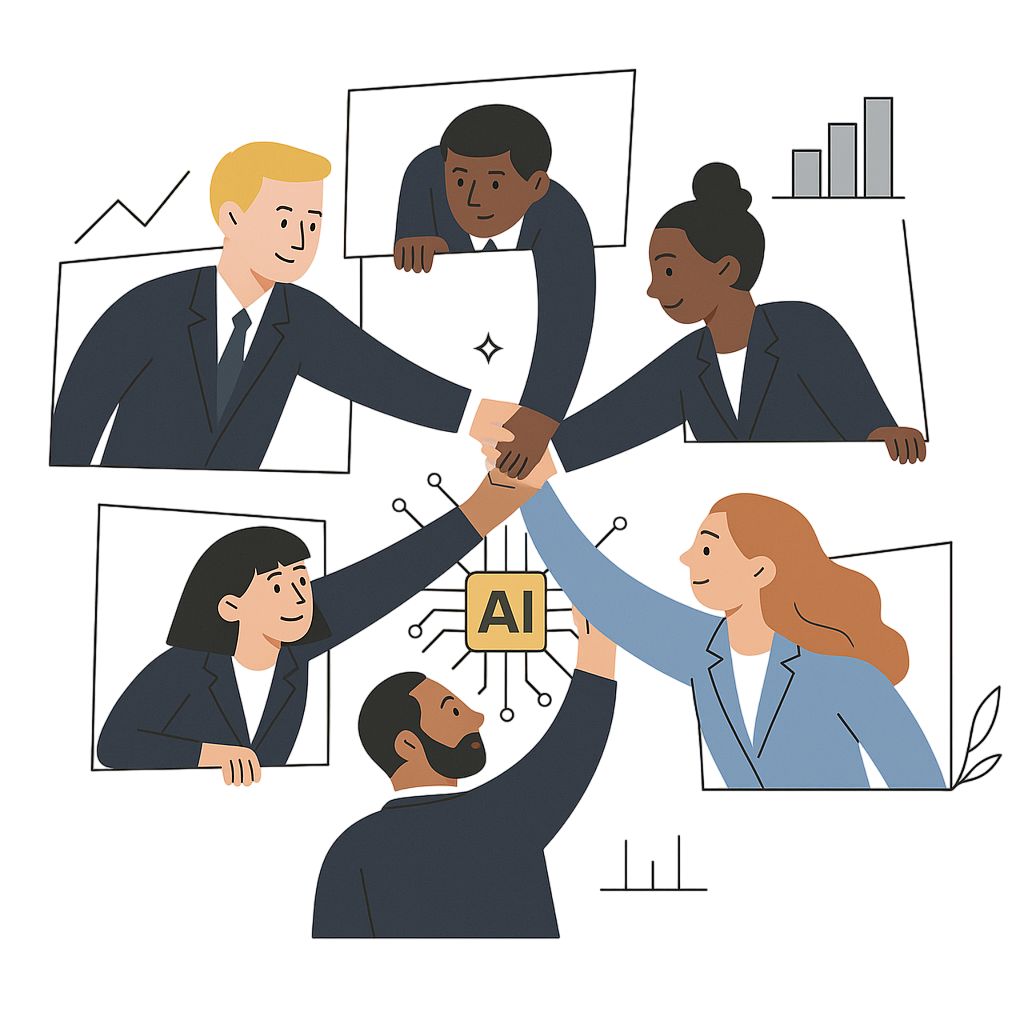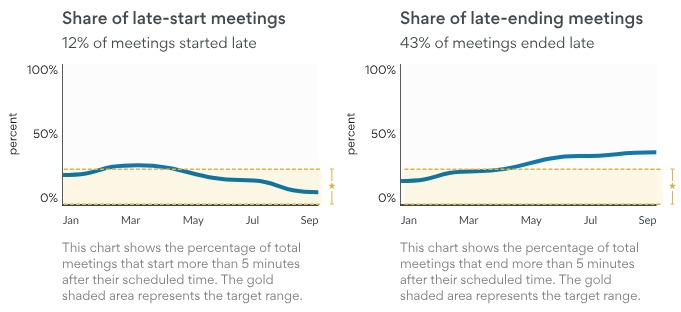
AI-powered tools are rapidly spreading through workplaces, promising to transform how we collaborate. From smart chatbots and coding assistants to meeting summarizers and predictive analytics, these tools aim to make teamwork more efficient and effective.
Software developers are pairing with AI copilots, HR managers are utilizing AI to analyze employee engagement, and executives are exploring AI solutions to boost productivity. However, amid all the excitement, a critical question remains: Are AI tools truly enhancing collaboration, or are they merely hype?
Recent data paints a mixed picture – one of soaring adoption and enthusiasm, yet surprisingly elusive returns. In this blog, we'll dive into the evidence, explore how AI is (and isn’t) enhancing collaboration, and discuss how a data-driven approach can help ensure AI delivers on its collaborative promise.
AI can make collaboration more effective by helping teams gather insights, organize information, and work faster. It can simplify research, automate repetitive tasks, and bring clarity to complex problems. When used well, AI allows teams to focus more on discussion, problem-solving, and decision-making rather than manual work.
However, AI should never replace real collaboration. If teams rely too heavily on it, they might skip valuable conversations, lose shared understanding, or limit diverse input. True teamwork happens when people exchange ideas, challenge perspectives, and make collective decisions.
AI should act as a supportive tool that strengthens how teams work together, not as a substitute for human connection. The goal is to combine AI’s efficiency with the empathy, communication, and shared thinking that only people can provide.
To truly realize the collaboration benefits of AI, companies should treat AI adoption as a strategic change initiative, not just an app installation. Here are some best practices and strategies to ensure AI tools become a positive force for teamwork:
Ultimately, making AI collaboration work is about intentional integration and iteration. The organizations that are seeing positive outcomes are those treating AI as a partner in process improvement: they pilot it, measure results, gather feedback, and refine how the team uses the tool. This continuous improvement loop, supported by data, is key to turning AI’s potential into real collaborative performance gains.
One of the biggest challenges for leaders today is knowing whether new tools, including AI, are truly improving collaboration. Many organizations rely on surveys or anecdotal impressions, but these rarely give an accurate view of how people actually work together. This is where a data-driven approach becomes essential, and Worklytics provides a clear way forward.
Worklytics is a people analytics platform that helps organizations understand how work happens by analyzing real-time collaboration data across the tools teams already use. It connects to collaboration tools like email, calendars, Slack, Jira, and GitHub to measure how time is spent, how teams communicate, and how workflows evolve.
Instead of reviewing private content, Worklytics analyzes metadata such as meeting length, response times, and chat activity. This gives leaders accurate, privacy-safe insights into productivity and collaboration trends across the organization.
Worklytics can reveal when teams are suffering from over-collaboration, a common issue where too many meetings, messages, or check-ins reduce productivity. By analyzing meeting frequency, message volume, and communication load, leaders can identify when collaboration has crossed from helpful to overwhelming.
Reducing unnecessary touchpoints not only saves time but also improves focus and clarity. With these insights, organizations can redesign collaboration norms to ensure employees have space to think and execute, not just communicate.

A key advantage of Worklytics is its privacy-first design. All data is aggregated and anonymized at the group level, ensuring that no individual’s activity is tracked or reviewed. The focus stays on team patterns, not personal behavior. This commitment to privacy builds trust and encourages employees to work confidently, knowing their communications are secure.

Worklytics can also uncover silos within an organization—when teams or departments collaborate well internally but rarely communicate across functions. This often limits innovation and slows down decision-making.
By visualizing collaboration networks, Worklytics helps identify where connections are weak or isolated. Leaders can then take targeted steps to strengthen cross-team relationships, encourage information sharing, and promote a more connected culture. Breaking silos ensures that collaboration is not just frequent but meaningful and aligned with organizational goals.
With Worklytics, organizations can continuously monitor how collaboration evolves as new tools, including AI, are introduced. Leaders gain visibility into improvements like shorter meetings, faster project cycles, and healthier work patterns. They can also spot early signs of burnout or inefficiency, such as increased after-hours work or communication overload.
This enables timely action, whether providing additional training, optimizing tool usage, or adjusting workflows.
In short, Worklytics turns collaboration measurement into a precise, data-backed process. It helps teams understand how they truly work together, identify what’s improving, and address what needs support. The result is a more connected, productive, and balanced organization where collaboration grows stronger with every insight.
AI tools can improve collaboration if implemented correctly. Research shows they can accelerate workflows, ease communication, and enhance creativity, often helping human-AI teams outperform humans alone. To make AI collaboration effective, companies need a deliberate, data-driven approach that empowers people rather than replaces human connection.
Tools like Worklytics help measure whether AI is truly improving teamwork or just adding noise. The goal is to use AI to automate repetitive tasks and surface insights while keeping creativity, judgment, and empathy at the core. Done right, AI and humans working together can make collaboration not only faster but also more meaningful and connected. Ready to see how AI can strengthen collaboration in your organization? Discover how Worklytics can turn data into actionable insights that help teams thrive.